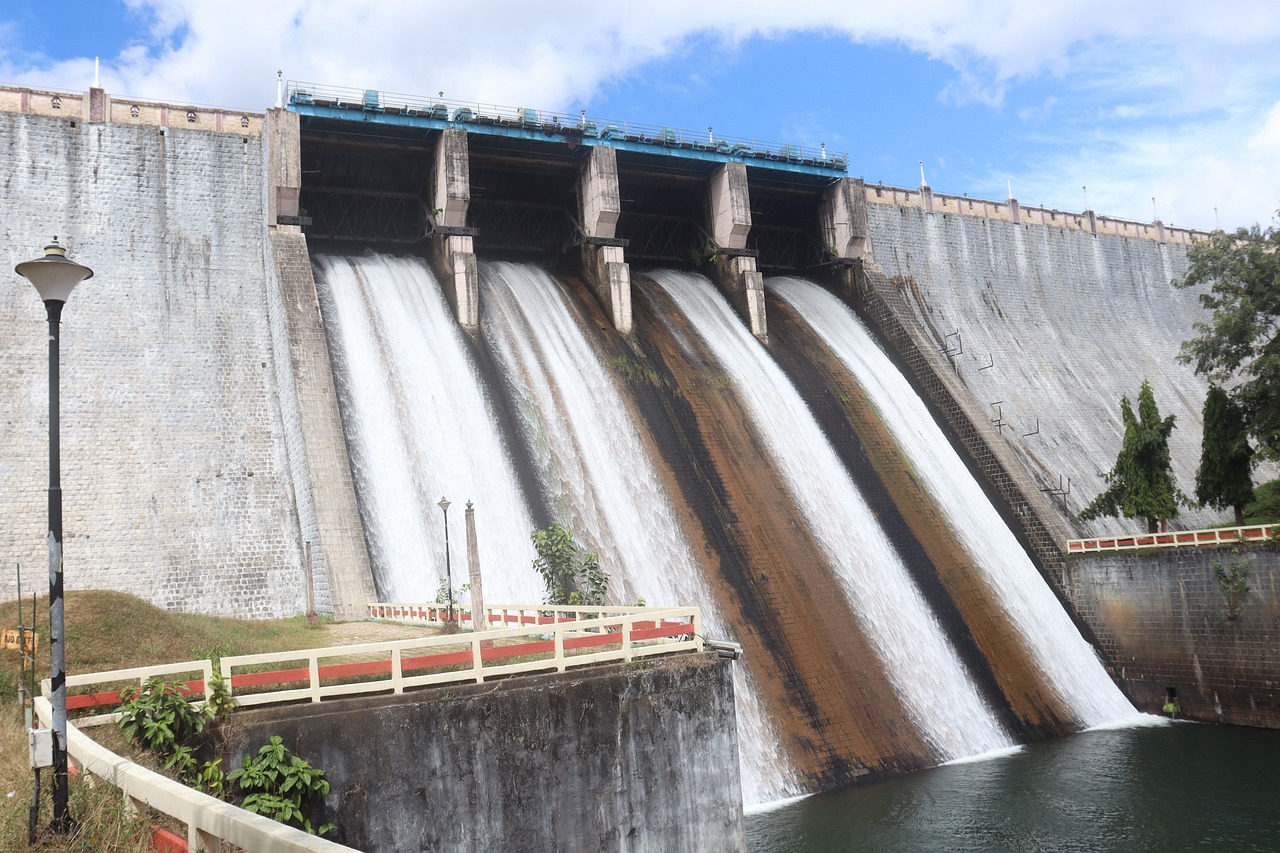Kerala is a region that is particularly vulnerable to flooding due to its climate, geography and hydrology.
The monsoon rains in the region cause severe floods every year.
The low-lying coastal areas are especially prone to flooding from rivers, lagoons, estuaries and heavy rainfall.
In addition, many large river systems such as the Periyar River and Bharathapuzha River have their headwaters in Kerala and can cause extensive flooding when they overflow their banks or become blocked by landslides or debris from upstream erosion.
Furthermore, the state has an extensive network of dams and reservoirs that are used for irrigation but also contribute to flooding when water levels rise too quickly.
The effects of this vulnerability vary greatly across Kerala depending on the terrain as well as socio-economic factors such as poverty levels, access to infrastructure and housing quality.
For example, in urban areas with poor drainage systems there may be more frequent flash floods while rural areas may experience more prolonged inundation with greater health risks due to water-borne diseases.
Additionally, people living in informal settlements may suffer disproportionately due to lack of protection or resources for managing flood events effectively.
Government agencies have taken several steps to reduce flood risk including introducing early warning systems and improving drainage networks.
However, these measures alone cannot adequately address the underlying causes of vulnerability which require long term adaptations such as land use planning policies that consider environmental considerations alongside social needs.
There is also an urgent need for better coordination between different government departments responsible for disaster management so that communities can benefit from integrated strategies that can reduce both short-term impacts of floods as well as long-term risks associated with them.
Measures Being Taken to Mitigate Risk of Flooding
Governments and organizations are taking steps to reduce the risk of inundation in areas at risk for heavy rainfall. These measures include developing early warning systems to alert people of impending floods, creating a large network of dams and reservoirs to store excess water, and building flood-control infrastructure such as embankments and canals.
In addition, governments are encouraging citizens living in flood-prone areas to take preventive actions such as creating buffer zones around their homes, planting trees on slopes that will help absorb water, and avoiding building structures near rivers or other waterways.
In order to increase preparedness among citizens living in vulnerable areas, it is important that disaster management agencies provide detailed information about what they should do during floods. This includes educating them about evacuation routes and safe havens where they can seek shelter when flooding happens. Furthermore, authorities must ensure that all necessary supplies such as food items, clean drinking water, medicines etc are made available during emergency situations so that people do not suffer from any kind of deprivation during disasters.
Finally, authorities must also work towards strengthening public awareness campaigns about the importance of following safety guidelines before and after floods occur. It is essential that people understand how they can protect themselves from potential harms caused by flash flooding or mudslides due to heavy rains. Such initiatives would enable communities living in these regions to prepare better for future occurrences of floods and minimize losses caused by them.
Frequently Asked Questions
What steps can be taken to reduce the impact of flooding on vulnerable communities in Kerala?
It is important to take steps to reduce the effect of flooding on vulnerable communities. This can include measures such as improving drainage and flood defences, implementing warning systems, educating communities on precautions, and providing financial assistance for relocation in extreme cases.
What is the economic cost of floods to the state of Kerala?
The economic cost of flooding to the state of Kerala is considerable; it includes damage to infrastructure, destruction of crops and livestock, loss of livelihoods, and increased healthcare costs.
How is climate change affecting flooding in Kerala?
Climate change is increasing the frequency and intensity of floods in Kerala, leading to greater destruction of property and disruption of infrastructure.
Are there any international organizations providing assistance to flood-prone areas in Kerala?
Are there any international organizations providing assistance with flooding? Yes, many organizations are actively working to provide funds and resources to help those affected by flooding worldwide.
What are the long-term solutions to reduce the risk of flooding in Kerala?
Long-term solutions to reduce the risk of flooding include improved infrastructure, better land use planning, increased green spaces, and the implementation of early warning systems.

